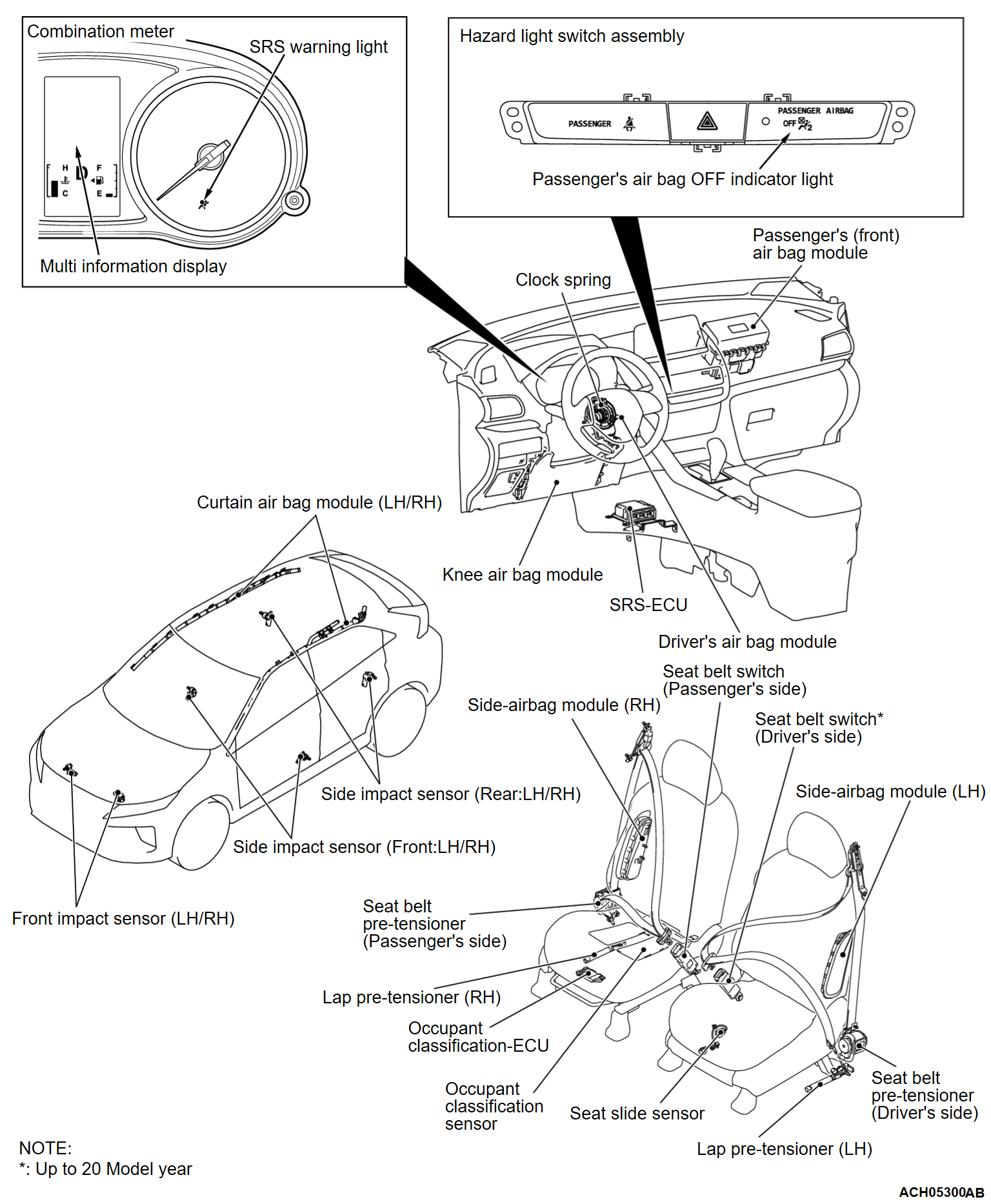GENERAL INFORMATION
| danger | The SRS-ECU adopts the rollover specification that the curtain airbag and seat belt pre-tensioner operate at the occurrence of rollover. Therefore, do not tilt the vehicle to the right and left with the IG ON or tilt the SRS-ECU to the right and left with the IG ON and the harness installed. |
| warning | Improper service could result in serious injury of the service personnel or the passenger. |
The Supplemental Restraint System (SRS) and seat belt with pre-tensioner is designed to supplement the driver's and front passenger's seat belts to help reduce the risk or severity of injury to the driver and front passenger by activating and deploying both front air bags in certain frontal collisions. The side-air bag and the curtain air bag are activated when an impact exceeds the threshold upon a side collision, and inflates to protect the heads of the occupants in the front and rear seats.
The SRS consists of driver's and passenger's (front) air bag modules, knee air bag module, side-airbag modules, curtain air bag modules, SRS air bag control unit (SRS-ECU), front impact sensors, side impact sensors, SRS warning light, clock spring, passenger's air bag OFF indicator light , lap pre-tensioner, front seat belt switch, seat slide sensor, occupant classification-ECU, occupant classification sensor and seat belt pre-tensioner. Driver's and passenger's (front) air bag modules are located in the center of the steering wheel and above the glove box. The knee air bag module is installed to the instrument panel cover lower under the steering column. Side-airbag modules are located inside the front seatback assemblies. The curtain air bag modules consists of an air bag, an inflator, and the fixing gear relating to those parts, and is installed in the roof side sections (from the driver's and the passenger's front pillars to the quarter trim uppers). Each air bag consists of a folded air bag and an inflator unit. The SRS-ECU under the front floor console monitors the system and has a front air bag analog G-sensor, front air bag analog G-sensor and a side (curtain) air bag analog G-sensor. The front impact sensor is installed on the front end upper bar in the engine room to monitor impact in case of front impact. The side impact sensors inside the center pillars and the rear quarter panel monitor the shock incurred by the sides of the vehicle. The SRS warning light on the combination meter indicates the operational status of the SRS. The clock spring is installed in the steering column. The seat belt pre-tensioner is built into the seat belt retractors of the driver's seat and front passenger's seat. The lap pre-tensioner has been installed on the outer seat belt lower anchor side. The seat slide sensor is attached to the slide adjuster on the driver's seat side. The occupant classification sensor is attached to the passenger seat cushion cover and pad. The occupant classification-ECU is installed underneath a rail of the passenger seat to detect the load on the seat. The passenger's air bag OFF indicator light is installed to the center panel and illuminates when the passenger seat airbag is inactive. The seat belt switch detects whether the seat belt is used.
When the SRS-ECU detects an impact above a certain level during a frontal collision, side collision or rollover collision, the SRS-ECU sends the collision detection signal to the telematics control unit (TCU) via hardwires. <Vehicles with telematics control unit (TCU)>
Only authorized service personnel should do work on or around the SRS components. Those service personnel should read this manual carefully before starting any such work.
![[Previous]](../../../buttons/fprev.png)
![[Next]](../../../buttons/fnext.png)
